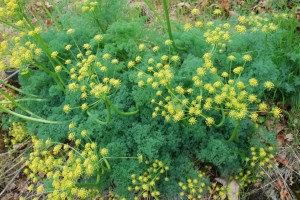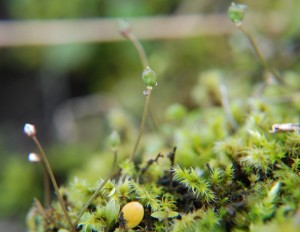
News/Reports
Mount Maxwell ER#37 Overview, Biological and Physical
ORIGINAL PURPOSE To protect outstanding Garry oak stands and associated vegetation
Physical: The reserve is on the strongly sloping southwest side of Baynes Peak. Surficial materials are colluvium and weathered bedrock derived from sandstone. Soils are thin, poorly developed, and subject to summer drought. Dominant soils are Brunisols, but small areas of Podzols occur. Streams and wetlands are absent, except for local seepage. The dry summer climate is accentuated
by the reserve’s southwestern exposure.
See the Complete PDF: mtmaxwell
Biological: The reserve is largely forested, but due to its aridity and presenceof rocky outcrops, the tree stands are fairly open, giving a parklandappearance. Three major habitat types are present, Garry oakstands, Douglas-fir forest, and rocky outcrops. Transitional types
occur between these habitat types and a small logged areadominated by bracken fern and Scotch broom. Substrate variabilityresults in frequent vegetation changes over short distances. Garryoak trees may occur in pure stands with a shrubless understory on some dry sites and Douglas-fir -sword fern stands on the most moist areas with good soil development. Rock outcrops are dominated by moss and selaginella. Despite heavy grazing, many species of showy spring wildflowers occur on seasonally moist sites among the oak woods and rocky outcrops. About 140 species of vascular plants and 20 species of mosses have been identified.Several plants that are rare in the province occur here. The reserve has a diverse insect fauna; preliminary surveys have identified 172 species representing 98 families. One species, the western oak-looper, periodically defoliates oak and Douglas-fir trees in the reserve.
The vertebrate fauna includes the Pacific Tree Frog, Northern
Alligator Lizard, Northwestern Garter Snake, red-sided garter
snake, Townsend Vole, Deermouse, Red Squirrel, Mink, Raccoon,
Black-tailed Deer and many birds.
Cultural: The reserve protects a complex network of subsurface shell
midden sites and a rock shelter used by First Nations for multiple
purposes.
SIGNIFICANT SPECIES/ECOSYSTEMS
yellow montane violet—Red listed—- endangered
California hedge-parsley—Red listed
Douglas-fir – arbutus association—Red listed
Garry oak – California brome association—Red listed
Garry oak – oceanspray association—Red listed
Gray’s desert-parsley—Red listed— Threatened
scalepod —Red listed
Propertius Duskywing—Blue listed
slimleaf onion—Blue listed
farewell-to-spring—Blue listed
prickly-pear cactus
Hooker’s onion
THREATS
Climate Change: Garry Oak ecosystems are highly endangered in British Columbia.
If the future climate is drier and warmer, as projected by the IPCC,
these endangered forest systems may expand, provided this
expansion is not impeded by infrastructure and other development.
The vegetation that characteristically grows under the Garry oak
canopy, however, may be displaced by aggressive, invasive
species.
Flora
cactus, prickly-pear (Opuntia fragilis)
desert-parsley, Gray’s (Lomatium grayi)
Douglas fir (Pseudotsuga menziesii)
farewell-to-spring (Clarkia amoena var. caurina and var. lindleyi)
fern, bracken (Pteridium aquilinum ssp. lanuginosum and ssp. latiusculum)
fern, sword (Polystichum munitum)
hedge-parsley, California (Yabea microcarpa)
oak, Garry (Quercus garryana)
onion, Hooker’s (Allium acuminatum)
onion, slimleaf (Allium amplectens)
scalepod (Idahoa scapigera)
selaginella (Selaginella spp.)
violet, yellow montane (Viola praemorsa ssp. praemorsa)
Invasive
broom, Scotch (Cytisus scoparius)
blackberry, Himalayan (Rubus armeniacus)
Fauna
Deer, Black-tailed (Odocoileus hemionus columbianus)
Deermouse (Peromyscus spp.)
Duskywing, Propertius (Erynnis propertius)
Frog, Pacific Chorus (Pseudacris regilla) [formerly Pacific Tree Frog (Hyla regilla)*]
Lizard, Northern Alligator (Elgaria coerulea)
Looper, Western Oak (Lambdina fiscellaria somniaria)
Mink (Neovison spp.)
Raccoon (Procyon lotor)
Snake, Red-Sided Garter (Thamnophis sirtalis)
Snake, Northwestern Garter (Thamnophis ordinoides)
Squirrel, Red (Tamiasciurus hudsonicus)
Vole, Townsend (Microtus townsendi)



